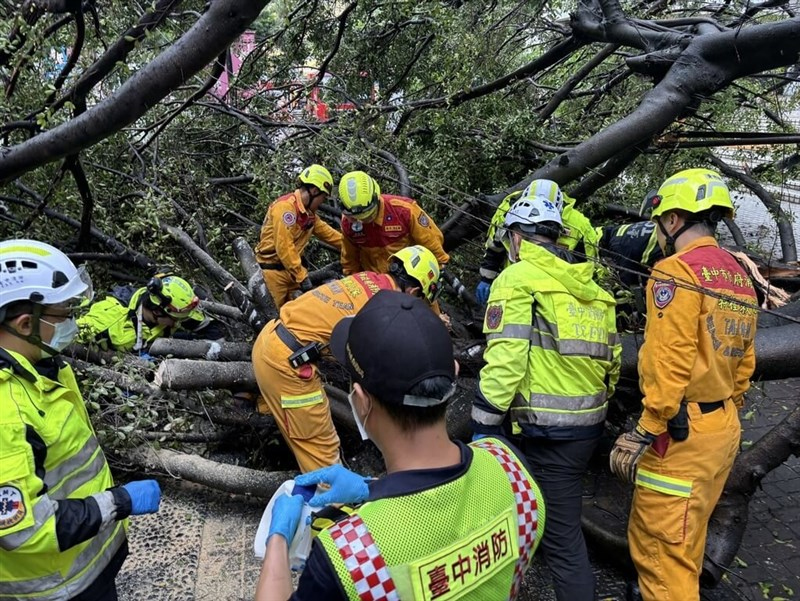Tragedy Strikes Campus Grounds as Extreme Weather Raises Safety Concerns
A 23-year-old student at Feng Chia University in Taichung City, Taiwan, died tragically on Friday afternoon after being crushed by a fallen Chinese banyan tree (Ficus microcarpa), according to the Taichung Fire Bureau. The student was among four people struck by the tree, which likely toppled due to prolonged and heavy rainfall in the region over the past week.
The student, who has not been publicly identified, was found unconscious at the scene and was rushed to Cheng Ching Hospital’s Chung Kang Branch. Medical staff reported that he arrived without vital signs and had suffered severe trauma to the head, face, pelvis, and thighs. Despite resuscitation attempts, he was pronounced dead shortly after arrival.
Three other individuals — including two passersby and another student — were also injured in the incident, though none of their injuries were life-threatening, according to preliminary reports. Emergency responders confirmed that the fallen tree was large and old, with a wide canopy that collapsed across a pedestrian walkway heavily used by students and faculty.
🌧️ Weather-Linked Tree Fall Raises Broader Questions
According to meteorological data from Taiwan’s Central Weather Administration, Taichung experienced record-high cumulative rainfall in the 72 hours preceding the incident, softening the soil and undermining root structures of older trees. Urban forestry experts have frequently warned that aged trees with shallow roots — particularly banyan species — are susceptible to collapse during such weather conditions.
This incident is prompting new calls for campus tree safety audits, particularly in older universities like Feng Chia, which has maintained its leafy green campus aesthetic since its founding in 1961.
In a brief statement, university officials said they were “deeply saddened” by the loss and have pledged to cooperate with authorities to determine liability and implement preventive measures. Campus maintenance crews have now begun a full inspection of all large trees across the university grounds.
🌿 Urban Planning and Infrastructure at a Crossroads
This tragic event is not isolated. Across Taiwan, urban forestry mismanagement has been spotlighted in recent years after similar incidents involving trees falling on cars, scooters, and even residential buildings.
Experts such as Prof. Lin Yu-chen of National Chung Hsing University’s Department of Forestry have called for “root-zone health monitoring, regular pruning, and smart anchoring systems” in high-risk areas like schools, hospitals, and parks. However, budget constraints and outdated maintenance protocols often leave municipalities and institutions unprepared for the challenges posed by climate-change-induced weather extremes.
📌 Summary
- Date of Incident: Friday afternoon, May 2025
- Location: Feng Chia University, Taichung
- Casualties: 1 death (male student), 3 injuries
- Cause: Large banyan tree collapse due to heavy rainfall
- Response: Fire Bureau rescue, hospital treatment, tree inspections underway
- Ongoing Actions: University review of tree safety, citywide scrutiny of old trees
📋FAQs
What caused the tree to fall at Feng Chia University?
Heavy rainfall over several days likely softened the soil, weakening the tree’s root system and causing it to collapse.
Were there any warnings or visible signs before the incident?
According to university sources, no prior warning signs such as visible tilting or root exposure were reported. The tree had not been flagged as hazardous in prior inspections.
How is the university responding to the tragedy?
Feng Chia University has initiated a full inspection of all large trees on campus and is coordinating with city arborists and emergency responders.
Are such tree incidents common in Taiwan?
While not frequent, Taiwan has seen several serious accidents involving tree collapses during typhoons or extended rain periods, especially in urban areas with aging greenery.
Could this accident have been prevented?
Experts suggest that better monitoring, including root health assessments and structural stability checks, could help identify at-risk trees before they pose a danger.


